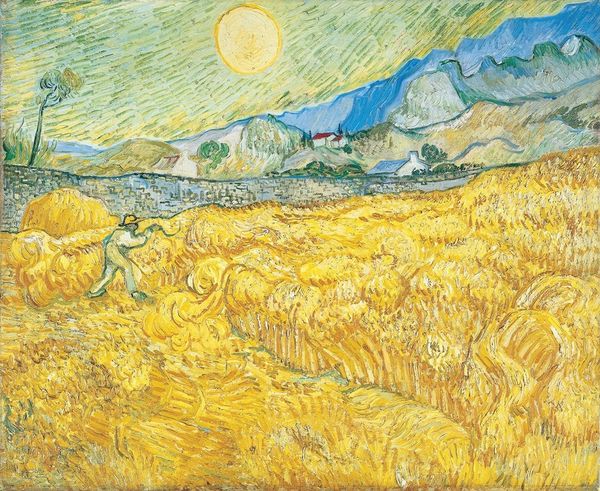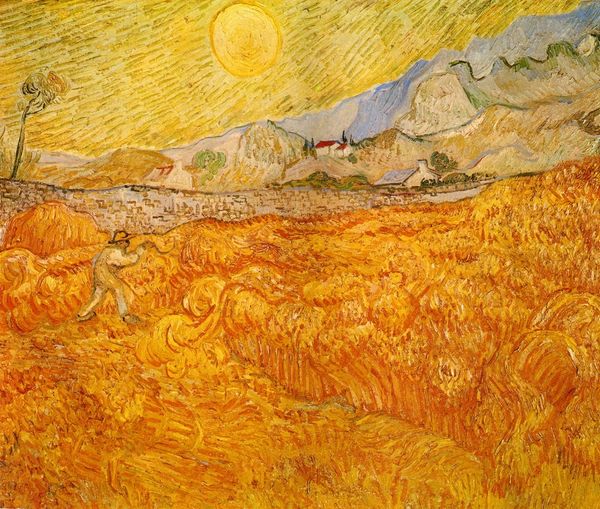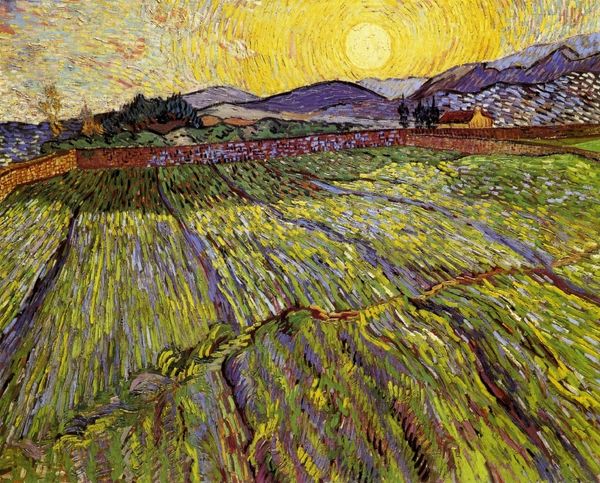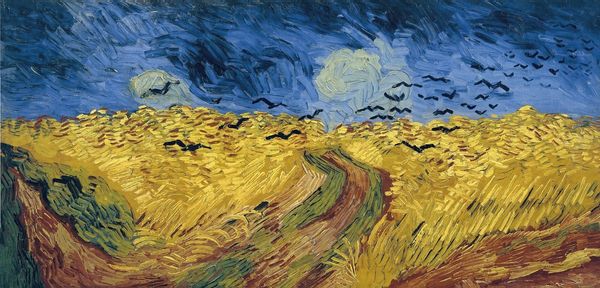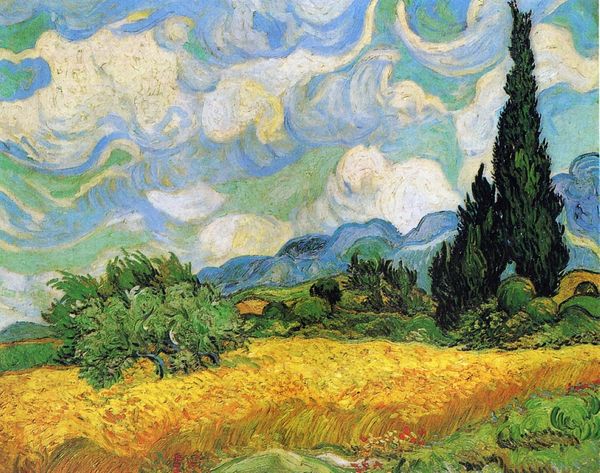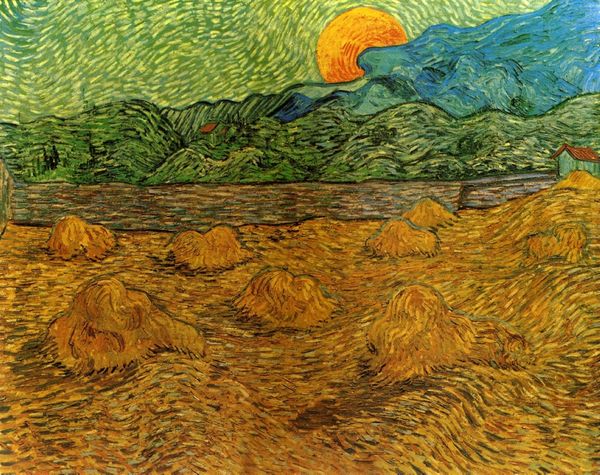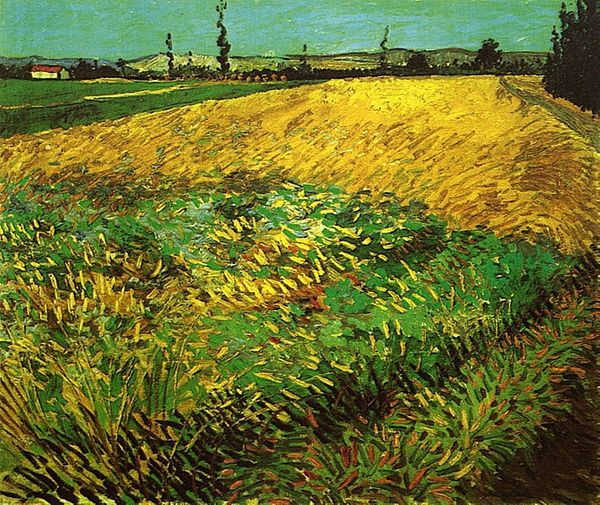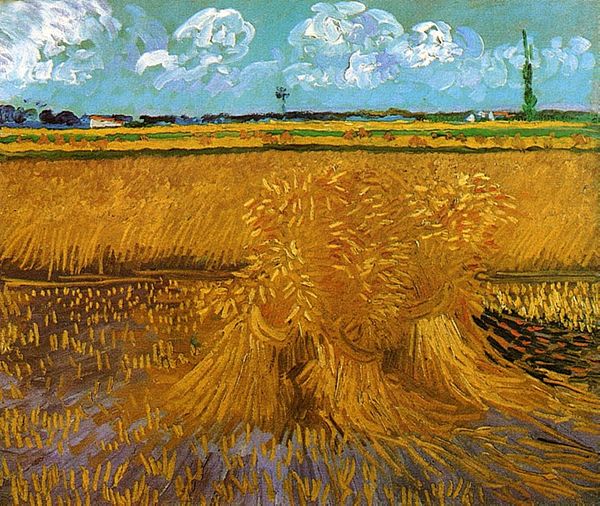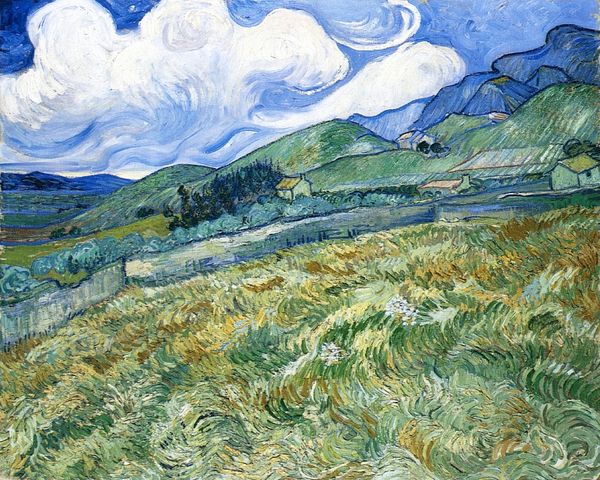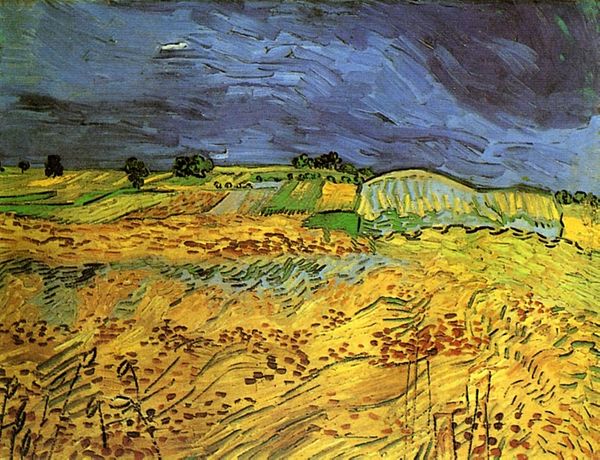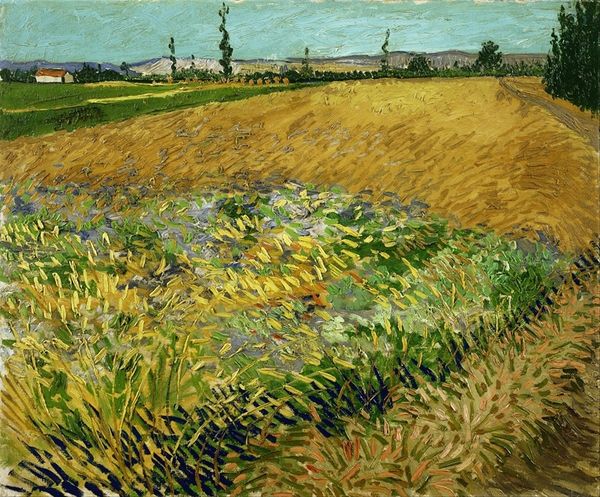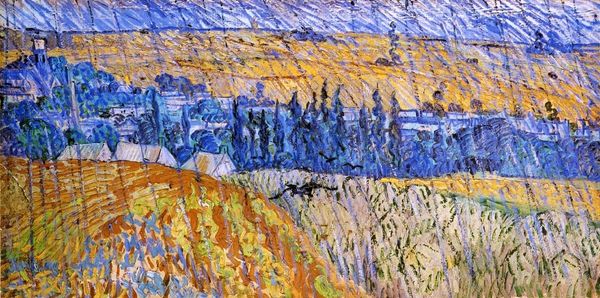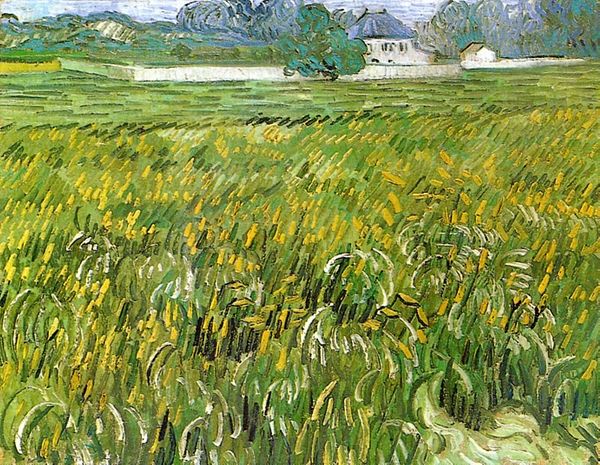
Dimensions: 73 x 92 cm
Copyright: Public domain
Editor: We’re looking at Van Gogh’s "Wheat Field with Reaper and Sun" from 1889, painted with oils in an impasto technique. It feels almost suffocatingly yellow at first glance, and there’s such movement in those brushstrokes. How do you interpret this work, given the period in Van Gogh's life? Curator: It’s a powerhouse, isn’t it? I think, at first, we get that blast of color, a pure visceral jolt. But linger, and there's a complex conversation happening between hope and, well, relentless toil. Look at the solitary reaper. Is he bringing in the harvest, or just trapped in an endless cycle? Notice how the sun, while a vibrant focal point, lacks warmth. It’s almost like a watchful eye, cold and distant. The wheat field seems to pulse and churn like the artist’s inner mind. What does that reaper make *you* feel? Editor: I see him as caught – the painting is overwhelming, but he is stuck there laboring through the swirls. There isn’t a lot of calm even with such expansive scenery. Curator: Exactly! The expressive brushwork amplifies that feeling of entrapment, wouldn't you agree? It is like the landscape itself is a physical manifestation of Van Gogh’s own mental turbulence and that single tree looking as desolate as ever! Van Gogh isn’t just depicting a scene, he’s channeling emotions onto the canvas, right? I almost get seasick when looking at this landscape – a little piece of raw vulnerability laid bare. Editor: So it is an image of harvest, but also so much about what Van Gogh was experiencing himself at the time, too? That's what speaks to me. Curator: Precisely! Art is an investigation as much as a record. Now when you look, perhaps the sun has shifted. Editor: I will certainly feel like I have to bring a lot of new perspectives on Van Gogh for class.
Comments
No comments
Be the first to comment and join the conversation on the ultimate creative platform.
